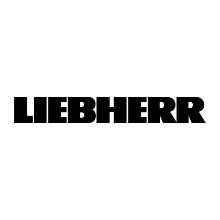Description
In order to handle the increasing amount and variety of cargo being transshiped in harbors, more and more handling equipment such as gantry or boom cranes are used. The crane under consideration is a LIEBHERR harbour mobile crane (LHM). This type of crane is a rotary boom crane with a moving device, which guarantees that the crane can be used very flexible at different locations in a harbor. The LHM is basically applied for the transshipment of containers, bulk cargo and general cargo. Depending on the LHM type the crane has a load capacity of up to 208 t, an outreach from 9 m to 58 m and a rope length of more than 100 m.
The boom crane has three main directions of motion: slewing, luffing and hoisting. The crane is equipped with encoders for the slewing angle, the luffing angle and the rope length. Two gyroscopes are used to measure the angular velocity of the load in tangential and radial direction. In order to calculate the position of the load being the control variable, the rope angels are reconstructed out of the gyroscope signals by disturbance observers. In the observer design disturbances due to noise, the offset caused by the measurement principle, tilt oscillations of the hook and natural higher order oscillations of the rope are taken into account. The luffing of the boom is caused by a hydraulic cylinder attached between the tower and the boom. The actuators for the slewing and hoisting motions are hydraulic motors.
The main objectives of crane automation are to increase the efficiency and security of the transshipment process. Therefore, advanced control strategies are applied for load sway reduction and trajectory tracking. So far only a few automation concepts for boom cranes exist. The main problems in the automation of cranes are the dominant nonlinear plant behavior and the problem of measuring the rope angles. The considered nonlinearities are the actuator kinematics of the luffing cylinder and the coupling between the slewing and luffing motion caused by the centrifugal acceleration of the load in radial direction during a slewing movement.
The interface of the operator of the automated system provides two operation modes. A manual operation mode running the crane via the hand levers with an active underlying crane control for load sway damping. In this case the input of the system is the actual desired velocity of the crane load. Additionally, a semi-automated operation mode, the so called teach-in mode, can be used. The input variables are the two target positions in the workspace of the crane and the desired velocity of the pay load. The target positions represent the boundaries of a sector (in the crane’s workspace) in which the load can be transferred on an arbitrary trajectory without leaving this sector.
The active load sway damping has a decentralized structure, i.e. the trajectory tracking control modules for every moving direction work independently of each other resulting in an easy maintenance and modularity. The control modules get the sensor signals and calculate the input variables for the actuators based on the time reference functions of an trajectory generation module. The modules are connected to the specific movement directions of slewing, luffing and hoisting. Whereas the hoisting movement is irrelevant for the anti-sway control, since hoisting do not excite any load sway. Each anti-sway control consists of a trajectory generation module and a trajectory tracking module. The trajectory generation modules generate the time functions for the reference position and their derivatives for all moving directions considering the given kinematic constraints. Therefore an optimal control problem is formulated and solved online including the state feedback of the controled system. The reference trajectories take into account the current state of the system, hence this outer feedback loop can be considered as a model predictive control (MPC) loop. The trajectory tracking modules have a two degree of freedom structure. They consist of a linearizing feedforward and a stabilising feedback part. The linearizing control law is derived based on the input/output linearization method, whereas the pole placement technique is used to calculate the feedback. Both parts are adaptive to frequently changing parameters such as the rope length and the luffing angle.
The anti-sway system is an optional equipment of all LIEBHERR harbour mobile cranes. The so called CYCOPTRONIC is used till now on fife continents in order to increase the effectiveness of the transshipment processes. Especially for untrained operators the amount of handled cargo and working safety increase, while the training effort decrease.


